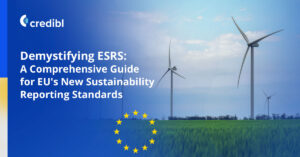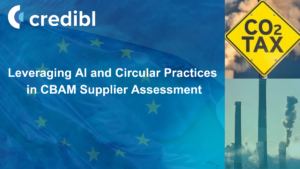Introduction to GRI Reporting Standards
The Global Reporting Initiative (GRI) Standards are the world’s most widely used and comprehensive sustainability reporting standards. Established to provide a consistent and uniform approach to reporting, they help organizations communicate their impact on the economy, environment, and society. The Standards encompass three broad areas: Universal (GRI 100 Series), Economic (GRI 200 Series), and Environmental/Social (GRI 300/400 Series).
The GRI Framework
The GRI Framework involves several interconnected components. First are the Universal Standards, including Foundation (GRI 101), General Disclosures (GRI 102), and Management Approach (GRI 103), which provide the basic structure for the sustainability report.
The Economic, Environmental, and Social Standards are issue-specific and provide an in-depth analysis of specific areas. Economic Standards (GRI 200 Series) address economic impacts, including indirect ones, and procurement practices. Environmental and Social Standards (GRI 300/400 Series) cover everything from energy, water, and emissions to employment, human rights, and product responsibility.
The GRI Standards employ a principle-based approach, focusing on materiality (those aspects reflecting an organization’s significant impacts or influencing stakeholders’ decisions), stakeholder inclusiveness, sustainability context, and completeness.
Reasons to File a GRI Report
Organizations may ponder why they should adopt the GRI Standards. Here are three compelling reasons:
- Transparency and Trust: GRI reporting promotes transparency, improving trust between an organization and its stakeholders, including customers, employees, investors, and the wider public.
- Sustainability Performance: By tracking sustainability performance, companies can identify areas of improvement, plan better, and reduce risks.
- Business Value: Sustainability reporting illuminates a business’s long-term value for stakeholders. While it requires resources, it guides companies in goal setting, progress tracking, and identifying growth opportunities, ultimately enhancing operational efficiency.
- Stakeholder Engagement: The GRI reporting process promotes engagement with stakeholders, resulting in valuable insights and improved relations.
The Structure of the GRI Standards
| Universal Standards: | |
| GRI 101 | Foundation |
| GRI 102 | General Disclosure |
| GRI 103 | Management Approach |
| Topic-Specific Standards: | |
| Economic Standards (GRI 200 Series) | |
| GRI 201 | Economic Performance |
| GRI 202 | Market Presence |
| GRI 203 | Indirect Economic Impacts |
| GRI 204 | Procurement Practices |
| GRI 205 | Anti-corruption |
| GRI 206 | Anti-competitive Behavior |
| Environmental Standards (GRI 300 Series) | |
| GRI 301 | Materials |
| GRI 302 | Energy |
| GRI 303 | Water and Effluents |
| GRI 304 | Biodiversity |
| GRI 305 | Emissions |
| GRI 306 | Waste |
| GRI 307 | Environmental Compliance |
| GRI 308 | Supplier Environmental Assessment |
| Social Standards (GRI 400 Series) | |
| GRI 401 | Employment |
| GRI 402 | Labor/Management Relations |
| GRI 403 | Occupational Health and Safety |
| GRI 404 | Training and Education |
| GRI 405 | Diversity and Equal Opportunity |
| GRI 406 | Non-discrimination |
| GRI 407 | Freedom of Association and Collective Bargaining |
| GRI 408 | Child Labor |
| GRI 409 | Forced or Compulsory Labor |
| GRI 410 | Security Practices |
| GRI 411 | Rights of Indigenous Peoples |
| GRI 412 | Human Rights Assessment |
| GRI 413 | Local Communities |
| GRI 414 | Supplier Social Assessment |
| GRI 415 | Public Policy |
| GRI 416 | Customer Health and Safety |
| GRI 417 | Marketing and Labeling |
| GRI 418 | Customer Privacy |
| GRI 419 | Socioeconomic Compliance |
The GRI Process
The GRI Reporting Process involves several key steps:
- Preparation: Understand the GRI Standards and determine the scope and objectives of the report.
- Materiality Assessment: Identify what matters most to your organization and stakeholders. This step involves stakeholder engagement and prioritization of material topics.
- Data Collection and Analysis: Gather data on identified material topics and analyze it to assess your organization’s impact on those areas.
- Report Writing: Write the report based on the GRI Standards, detailing the organization’s impacts and responses.
- Review and Assurance: It’s beneficial to have the report externally assured for credibility. This step involves review and verification of the report by third-party auditors.
- Communication: Share the report with your stakeholders and communicate your findings effectively.
Adopting the GRI Reporting Standards is more than a mere compliance exercise. Credible ESG provides an opportunity to demonstrate commitment to sustainable business practices, engage meaningfully with stakeholders, and drive your organization towards a sustainable future. Embracing the GRI process can help your organization identify risks and opportunities, foster transparency, and build trust in an increasingly sustainability-conscious world.







